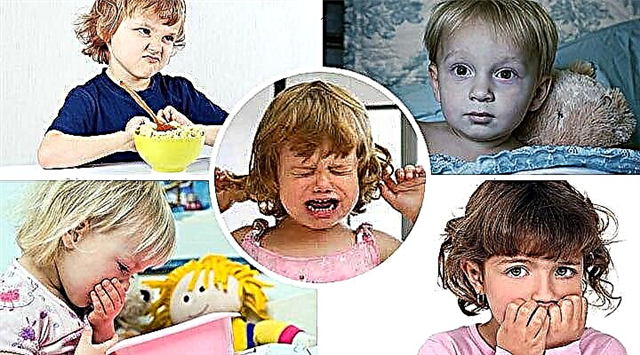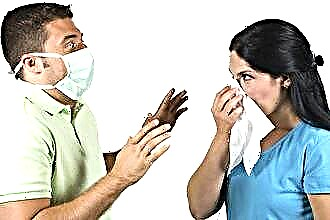Otitis media is called otolaryngological pathology, which is characterized by inflammation of the Eustachian tube, ear membrane and mastoid process. In pediatrics, ear disease is one of the most common. According to statistics, by the age of 3 years, more than 90% of children suffer from ear inflammation.
Children are more susceptible to ear pathologies, which is due to the anatomical and physiological features of the structure of the ear. Reduced reactivity of the immune system and frequent morbidity increase the risk of developing the disease. However, a timely visit to a specialist and adequate treatment allows you to quickly stop the main clinical manifestations of otitis media.
Children's ear structure

The principles of treatment of otitis media in children are determined by the symptoms of the disease, by which it is possible to establish the type of pathology and the stage of its development. However, in infancy, it is not easy to independently diagnose pathology. This is due to the inability of the child to complain about the pains or discomfort in the ear that bother him.
The frequent incidence of otitis media in children is associated with the physiological features of the structure of the ear:
- in children, the Eustachian tube is much wider in diameter and shorter than in adults;
- the auditory tube is located almost horizontally in relation to the nasopharynx;
- the ear membrane in a small child is much thicker than that of an adult;
- the tympanic cavity in infants is lined with myxoid tissue, which is loose in structure and therefore more susceptible to attacks by pathogens;
- the mouth of the auditory canal is located very close to the adenoids, which contributes to the rapid penetration of pathogenic flora from the nasopharynx into the ear.
An underdeveloped hearing aid system in young children is very vulnerable. It is worth noting that due to the immaturity of the ear glands, very little sulfur is formed in the external auditory canal, which creates an acidic environment in the ear. Its absence leads to a change in the pH level in the ear canal, which is fraught with the penetration of pathogenic bacteria or fungi.
Etiology
If characteristic symptoms of otitis media in children are found, treatment should be started as early as possible. Due to the reduced resistance of the body, the pathogenic flora spreads rapidly, which contributes to the aggravation of the state of health. Often, due to untimely access to a doctor, ENT disease becomes chronic.
The causative agents of ear pathology are nonspecific strains of bacteria, viruses and fungi. In 80% of cases, the disease develops as a complication after an infectious lesion of the nasopharynx. According to medical observations, most often, inflammation in the ear cavity occurs when:
- rhinitis;
- sinusitis;
- laryngitis;
- tonsillitis;
- adenoids.
There are a number of specific factors that contribute to the development of ENT disease in an infant. They play a decisive role in the incidence rate:
- low reactivity of the body, due to the practical absence of acquired immunity;
- being in a horizontal position at all times, which increases the chances of food leftovers entering the Eustachian tube when regurgitating;
- susceptibility to "childhood" diseases such as scarlet fever or diphtheria, which are very often complicated by ear inflammation;
- hypotrophy of the pharyngeal tonsils, which increases the risk of penetration of pathogens from the nasopharynx into the auditory canal.
Approximately 25% of children diagnosed with otitis media have had food allergies or exudative diathesis. That is why pediatricians advise to closely monitor the condition of the child during breastfeeding and the introduction of complementary foods.
Important! Lower respiratory tract pathologies increase the risk of developing the disease by 2 times.
Clinical manifestations
Inflammatory processes in the ear begin sharply and suddenly, as evidenced by the child's febrile temperature. In newborns and infants, general symptoms of the development of ear pathology are more pronounced, which include:
- anxiety;
- tearfulness;
- refusal to eat;
- lack of sleep;

- vomiting;
- diarrhea.
Inflammatory processes in the ear at the initial stages of the development of the disease are not perforative, therefore, it is impossible to judge the presence of otitis media by suppuration. It is very common for babies with ear inflammation to cry while breastfeeding. Due to the creation of a differential pressure on the ear membrane during sucking, discomfort or pain is felt, which makes the child naughty.
Important! Late diagnosis of pathology in children often leads to complications such as mastoiditis, hearing loss and inflammation of the meninges.
Otitis media at 3 years
It is much easier to determine the main symptoms of otitis media in 3-year-old children and to prescribe treatment than in infants. At this age, the child can draw the attention of parents to the presence of discomfort and pain in the ear. The very behavior of the child testifies to the development of pathology. He constantly rubs his ear against clothing and leans against metal objects to try to relieve pain.
The development of otitis media in a 3-year-old child is signaled by the following signs:
- ear congestion;
- aching or sharp pain in the ear;
- dizziness;
- lack of appetite;
- hearing impairment;
- hyperthermia;
- headache.
You can verify the presence of an ENT disease using a light test. Gently press down on the ear tragus with your index finger. If the baby starts to cry or pulls his hands to his ear, it is most likely that there is inflammation in him.
Therapy methods
Only a qualified specialist can choose the optimal course of treatment for an ear disease. It is determined not only by the severity of the inflammatory processes and the prevalence of lesions, but also by the patient's age. In most cases, the course of therapy includes:
- antibacterial drugs - destroy the cellular structures of pathogenic bacteria, which contributes to the elimination of pathogenic flora in the foci of inflammation;
- pain relievers - relieve pain, thereby alleviating the course of the disease;
- antiseptic ear drops - kill pathogens in the ear, which prevents them from penetrating into the tympanic cavity;
- mucolytics - thin the mucus in the ear cavity and facilitate its evacuation;
- vasoconstrictor drops - reduce vascular permeability, thereby eliminating tissue edema;
- warming compresses - accelerate blood microcirculation in the affected tissues, which contributes to their regeneration.
Features of pharmacotherapy
Conservative treatment of acute otitis media in children involves the use of anti-inflammatory, antibacterial, analgesic, antipyretic and decongestant drugs. Symptomatic and pathogenetic therapy consists mainly of the following drugs:
- vasoconstrictor drops - "Galazolin", "Vibrocil", "Nazol";
- analgesics - Panadol, Rapidol, Nurofen;
- antipyretics - "Acetaminophen", "Ibuprofen", "Efferalgan";
- antibiotics - "Zinnat", "Amoxicillin", "Suprax";
- ear drops - "Otofa", "Otipax", "Sofradeks".
Do not use ear drops if there are perforations in the ear membrane. Their active ingredients will provoke irritation and even greater tissue edema.
The dynamics of the regression of inflammatory processes largely depends on the correct use of drugs, in particular ear drops. If necessary, local treatment of a child, the following nuances should be taken into account:
- before instilling the medicinal solution, the vial with the drug must be warmed up to 36 degrees;
- the child should be laid with the sore ear up and, pulling a little on the auricle, drip the required amount of the drug into the ear canal;
- so that the liquid does not flow out of the ear, the child needs to lie on his side for 5-7 minutes.
As a rule, otitis media is bilateral. Even if the patient complains of pain in only one ear, drops should be instilled into the other.
Surgery
Surgical treatment of otitis media in children is required only if there is purulent inflammation in the ear cavity. Due to the increased density of the tympanic membrane, perforation is not always observed even with a strong pressure of purulent masses. This increases the risk of penetration of purulent exudate into the ear labyrinth, which is fraught with sepsis, mastoiditis, meningitis, etc.
Surgical intervention is aimed at eliminating purulent foci of inflammation and restoring auditory function. Operations, as a rule, combine sanitizing and reconstructing stages. The type of surgical procedure largely depends on the clinical manifestations of otitis media:
- atticoanthrotomy - opening of the eardrum cavity followed by removal of purulent masses from the mastoid process;
- paracentesis - an incision of the ear membrane in order to empty the ear from purulent contents;
- tympanoplasty - restoration of the integrity of the ear membrane after its perforation;
- adenotomy - surgical removal of the adenoids.
Timely diagnosis of otitis media in a child prevents the development of severe complications. Their occurrence leads to the need for surgical treatment. However, surgery can cause hearing loss due to the formation of adhesions on the ear membrane.




